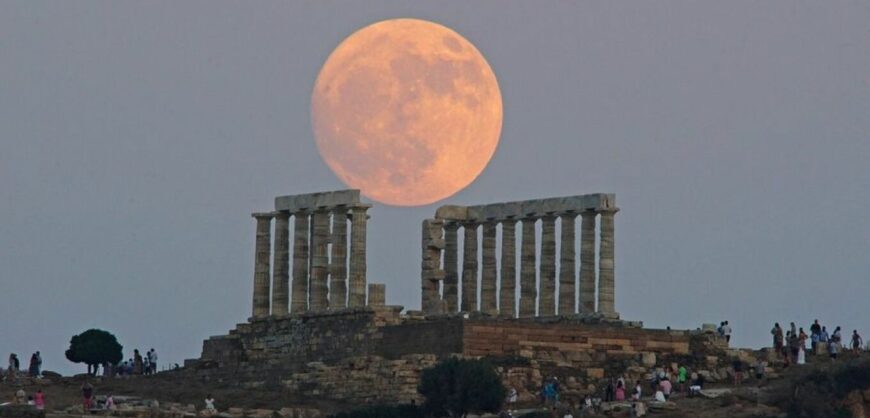August is an exciting month for moon lovers, with the summer month opening and closing with a supermoon. The Full Sturgeon Moon rises on Tuesday, Aug. 1, and then the month closes out with the Full Blue Moon on Aug. 30.
Not only are both of these full moons supermoons, but they represent the midpoints in a chain of four such lunar events that began with the Full Buck Moon on July 3.
Today’s full moon is called the “Sturgeon Full Moon” in honour of the Native Americans who fished for sturgeon in large quantities in August in the lakes of North America. A special feature is that it is also a supermoon, the second of four in the summer of 2023.
As Fioris-Anastasia Metallinou, an astrophysicist at the Thiseion Visitor Centre of the National Observatory of Athens, explains to Athens News Agency, the supermoon occurs when the Moon is in the full moon phase and is very close to the perigee, its closest point to Earth. That’s why it looks bigger and more impressive, especially for experienced Moon observers. Metallinou urges people to observe the Moon with the naked eye as soon as it rises and is low on the horizon, “because then it gives us the feeling that it is bigger”. It is noted that in Athens the supermoon of the Oxyrhynchus will rise at 8.53 pm.

This August holds a second full moon, and this one a supermoon, on 31 August. As it will be the second full moon to occur in the same month it is also called the “Blue Moon”. Characteristically, we had a supermoon and a blue moon at the same time again in December 2009 and the next one will happen in nine years, in August 2032. The Blue Moon supermoon will rise in Athens at 8.31 pm.
Between the two August full moons, there will be a new Moon on August 16, which will also have something special: it will be a new micro-Moon, meaning the new Moon will occur near its farthest point from Earth, the apogee.
Note that the first supermoon of 2023 was on July 3 and the last supermoon of the year is expected on September 29.




































